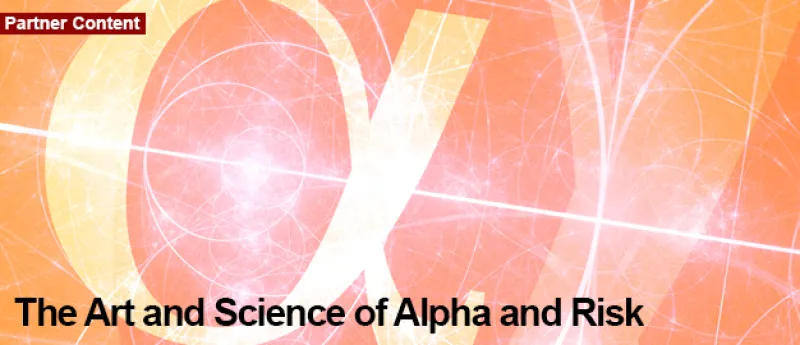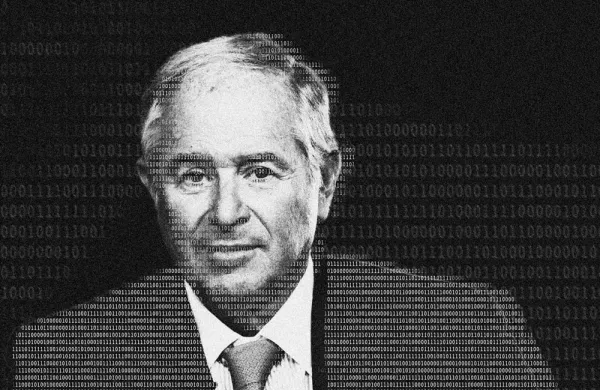{BrightcoveVideo}
Watch the debut of our three-part roundtable, as an all-star panel of asset managers discusses the challenges they face today in finding alpha.
Even the concept of alpha is viewed in multiple ways by asset managers. It’s a core belief of U-Wen Kok, Chief Investment Officer, RS Investments Developed Markets Group, that “planning alpha is actually possible.” Despite the way data now saturates the major securities markets, Kok feels that achieving a sustainable edge is a realistic long-term goal. “When we find active managers who do phenomenally well, we invest in these people, because we believe inefficiency still exists in the marketplace,” says Kok.
En route to a sound, enduring advisor-client relationship—fueled by growth—how data is handled matters greatly. “A generation ago, an analyst did the job of a detective,” says Brian Reich, President and Managing Partner, Atrato Advisors. “Today, it’s more the job of a filter, separating signal from noise.”
Like any reward of true value, alpha is best viewed as a marathon rather than a sprint. A longer time horizon and patience to work through phases and fluctuations are invaluable. “At the end of the day, time in the market will determine your success,” suggests Hank Smith, Co-Chief Investment Officer, Haverford Trust. “The longer you can be an investor, whether you’re one point ahead of whatever index or one point behind—if you’ve been invested for 30 years, you will be extremely satisfied with the amount of money you’ve made in equities.”
Resilience in volatile times
“The question we ask is, how do we structure a portfolio that ensures clients can stay invested through all cycles?” says Smith. “If we can do that, we are creating alpha.”
Risk management itself is a combination of art and science, according to Pradeep Menon, Managing Partner, Thomson Reuters. “A lot has been made about the science of it, which is that you need to have the right data, capture it in the right way, have a methodology that is kind of universal. That’s a minimum. In reality, the art of it—the expertise—then takes over.”
There’s no substitute for expertise, says Menon. “In the end, I think the underlying theme is transparency. You need to understand and communicate risks, whether it’s with your regulator, your client, or your investor, and say, ‘What are you comfortable with?’
“If you manage risk to a number, you go to sleep with a smile on your face—and you wake up dead,” Menon continues. “You’d rather be approximately right than precisely wrong—and understand that these are all assumptions, that we have the underlying math and the models and the science taken care of. It’s the art and the communication that really matters.”
Managing risk is intellectually more interesting than observing performance, because it’s always forward-looking. Risk also takes many forms and shadings, playing that two-way game of beta: smooth and safe, or choppy and thus open to opportunity. “I’m a long-only manager, so risk for me would be under-performance of our portfolios against our benchmarks,” says Kok. “Likewise, if the benchmarks are going up, we need to outperform the benchmarks. But the downside is more important. We have good downside capture in our funds, but the task is to do better than the benchmarks in both ways.”
The “art and science of risk,” as Menon describes it, draws a lot of the best brainpower from the risk management discipline. These are people who “scenario” things on a constant basis. The process, as described by Stuart Peskin, Investment Director, Standard Life Investments, draws on multiple sub-specialties. “We start by taking on the challenge of thinking about scenarios that have some degree of similarity to history and, importantly, are economically plausible,” says Peskin. “Then we take it a step further and consult with the subject matter expert in the currency market or the equity market, and decide what the market move might be in that particular case.”
His group has done this drill endlessly, with occasional proof-of-concept moments as events imitate scenarios. “We had been modeling a potential China crisis for quite a long time, and until the summer of 2015 we really didn’t have a way to analyze whether we’d got our thinking right in terms of the overall market impacts, and from a proportional standpoint,” recalls Peskin. “But indeed, when it came through, we saw the movements in markets that were quite close to what we thought would be the outcome.”
There are no boundaries—and rightly so—on how a client might critique portfolio management. That includes complaints of excess caution. “As it turns out, there are cycles in which our absolute return funds don’t exhibit much volatility,” notes Peskin. “At that point, clients may start to ask, ‘Are you taking enough risk?’”
This creates a need, according to Peskin, to think hard about the information being provided; does it show the amount of risk being taken in the portfolio, and does it do so in a sufficiently transparent way? “We need to be sufficiently clear and consistent in our reporting,” says Peskin, “so the client can see there are indeed a lot of different moving parts to the portfolio, and an appropriate level of investment risk when the environment isn’t generating much portfolio volatility.”
RELATED CONTENT
Click here to return to The Solutions for Asset Managers main page
Click here to read: Finding Alpha in a Time of Lower Fees and Rising Costs
Click here to read: The Art and Science of Alpha and Risk
Click here to watch New Realities for Asset Managers
Thomson Reuters Asset Management Solutions provide you with the most comprehensive financial content sets available, to deepen your research capabilities and help you make the most important investment decisions for your customers. These are delivered through its range of flexible technology solutions that allow you to drive efficiency and increase productivity across your business.
Click here for more information on Thomson Reuters Asset Management Solutions.






